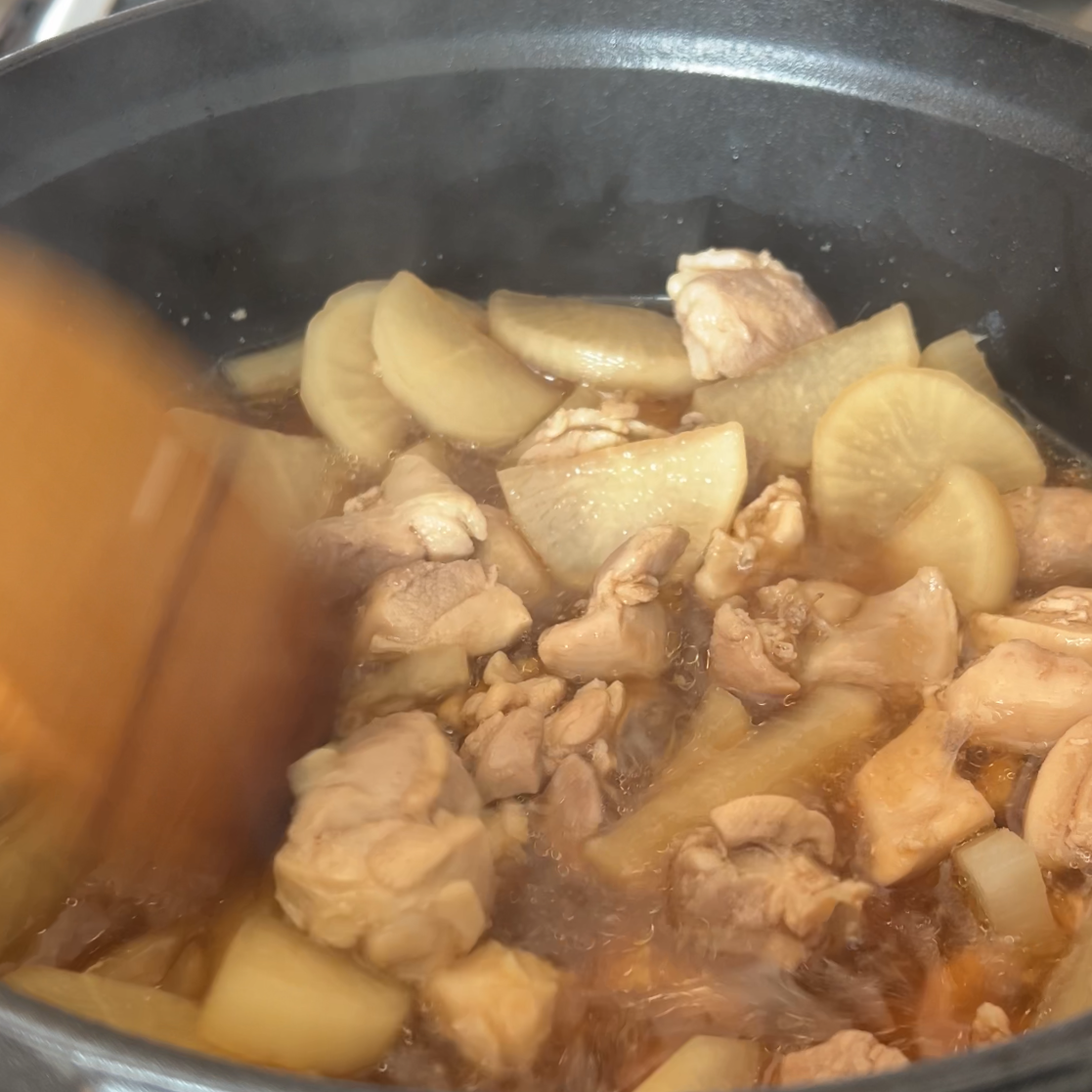Simmered Daikon and Chicken
Daikon and Chicken Simmered in Savory Soup Easy Recipe
In Japanese cuisine, there’s a cooking technique that beautifully embodies both simplicity and depth called Nimono (煮物). This traditional simmered dish involves gently cooking vegetables, fish, or meat in a seasoned broth made with dashi, soy sauce, mirin, and sugar. Loved for its comforting flavors and delicate balance, the Japanese simmered dish, Nimono has been a staple in Japanese households for generations.
One of my personal favorites is Daikon and Chicken no Nimono, or Simmered Daikon and Chicken. It’s a dish that’s not only close to my heart but also a big hit with my kids. The tender daikon absorbs all the savory umami from the chicken and broth, creating a harmony of flavors that’s both nourishing and satisfying.
RECIPE
Servings: 3-4
Time: 30 min
Ingredients:
1 lb chicken thigh
1/2 pc medium daikon
1 pack dashi powder (or 1 tbsp)
2 tbsp soy sauce
2 tbsp mirin
1 tbsp sake
salt
scallion
Instructions:
Prepare the ingredients:
Peel the daikon and cut it into half rounds (about 1/2 inch thick).Cut chicken thigh into bite sizes.
Chop scallion for garnish
Cook the chicken:
In a medium pot, heat a touch of sesame oil.Lightly sauté the chicken pieces with a pinch of salt and 1 tbsp of sake, cook until the surface changes color.
Add the daikon and broth:
Add the daikon to the pot and stir quickly to coat each daikon gets coated with chicken grease.Pour in the dashi powder, soy sauce, mirin, sake, and water.
Simmer gently:
Bring to a boil, skim off any foam, then reduce the heat to low.Cover with a drop lid (otoshibuta) or parchment paper circle, or just a regular lid, and simmer for about 15 minutes, until the daikon becomes tender and flavorful.
Serve:
Serve warm with a sprinkle of chopped scallions.
My Kitchen Tool:
Staub pot (4qt) is perfect for cooking soups
The Origins of Nimono:
One of the stories I hear is that Nimono finds its roots in the ancient practice of preserving food in Japan.
In the past, when refrigeration was not readily available, simmering ingredients in a broth became an effective way to extend their shelf life. The technique not only imparted flavor but also helped tenderize tougher cuts of meat and vegetables. Over time, Nimono evolved into a culinary art form, celebrated for its ability to create tender and richly flavored dishes.
At the heart of Nimono lies the philosophy of bringing out the natural flavors of the ingredients while maintaining their integrity. The gentle simmering process allows the ingredients to absorb the flavors of the broth, resulting in dishes that are harmonious and balanced. This method of cooking highlights the importance of texture, aroma, and presentation, all of which are deeply ingrained in Japanese culinary traditions.
One of the remarkable aspects of Nimono is its adaptability to the changing seasons. Japanese cuisine places great emphasis on using fresh, seasonal ingredients to create dishes that reflect the time of year. Whether it's the vibrant colors of spring vegetables or the hearty root vegetables of winter, Nimono showcases the bounties of each season, celebrating the diversity and abundance of nature.
Tips & Variations
Make it ahead: Nimono (Japanese simmered dish) tastes even better the next day as the flavors deepen. Simply reheat before serving.
Add eggs: Try adding boiled eggs to the pot — they’ll soak up the broth beautifully!
Substitute protein: You can use thinly sliced pork belly or even firm tofu for a lighter version.
Shortcut: If you’re short on time, use mentsuyu (noodle soup base) instead of mixing your own seasonings.








